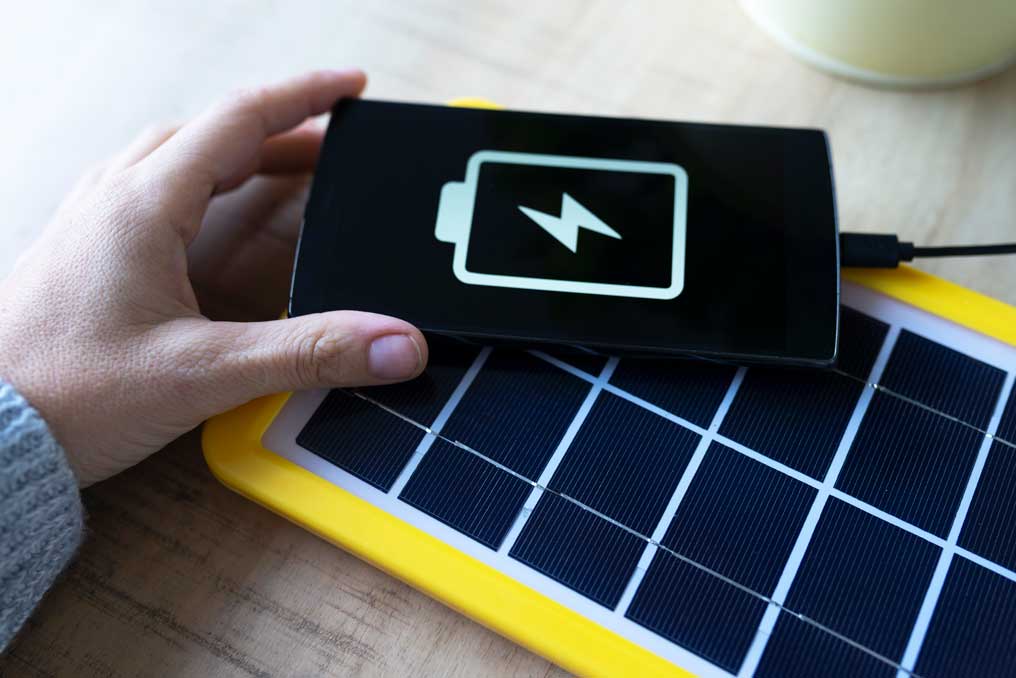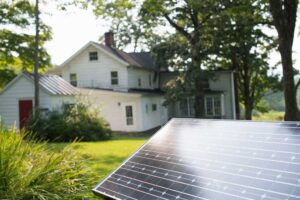Solar panels are a great way to save money on your electricity bills and reduce your carbon footprint. But did you know that you can also make money from solar panels? This is possible through a system called a feed-in tariff (FIT).
A FIT is a payment that you receive from your electricity provider for the excess solar energy that your panels generate. This excess energy is then fed back into the grid, where it can be used by other homes and businesses.
The amount of money you earn from a FIT will vary depending on your location, the size of your solar system, and the FIT rate offered by your electricity provider. However, in many cases, you can earn enough money to offset the cost of your solar system in a few years.
How do FITs work?
When you install solar panels on your home, you are essentially creating a small power plant. This power plant generates electricity during the day, when the sun is shining. However, you may not use all of this electricity during the day. Any excess electricity is then fed back into the grid.
Your electricity provider will then pay you a FIT for this excess electricity. The FIT rate is the amount of money that you will receive for each kilowatt-hour (kWh) of electricity that you feed back into the grid.
The FIT rate is set by your electricity provider, and it can vary depending on your location and the size of your solar system. However, in general, FIT rates are lower than the rates that you pay for electricity from the grid.

How to make money from solar panels
There are two primary avenues to capitalise on the energy generated by your solar panels and turn it into a lucrative opportunity:
Selling Excess Electricity: The most common and straightforward method involves selling the surplus electricity your solar panels produce back to your electricity provider. When your panels generate more electricity than your household consumes, the excess power is fed into the grid. Your electricity provider will pay you for this contributed energy based on a predefined rate known as the Feed-in Tariff (FIT). To begin earning through this approach, you’ll need to sign a contract with your electricity provider, which outlines the agreed-upon FIT rate and the duration of the contract.
Battery Storage System: Another approach to maximise your solar investment is to install a battery storage system. This involves purchasing a battery and the necessary equipment to store the excess electricity generated by your panels. Rather than sending all the surplus energy to the grid, you can retain it in the battery for later use. This means you can tap into this stored electricity during times when your solar panels aren’t actively producing energy, such as at night or on cloudy days. By utilising the stored power, you reduce your dependence on electricity from the grid, which can lead to substantial savings on your electricity bills.
Both methods have their unique benefits. Selling excess electricity through the FIT program provides a consistent income stream over the contract period, effectively offsetting your electricity costs. On the other hand, investing in a battery storage system allows you to become more self-reliant by using the stored energy when needed, offering increased energy independence and further reducing your reliance on the grid.
Whichever option you choose, embracing solar technology presents an exceptional opportunity not only for financial gains but also for contributing to a more sustainable and environmentally conscious energy future.
ALSO READ: Government Incentives for Solar Panels

How to find the best Feed-in Tariff rate?
Finding the best Feed-in Tariff (FIT) rate for your solar energy system requires research and comparison among different electricity providers and programs in your area. Here are some steps to help you find the most favorable FIT rate:
- Check with Local Electricity Providers: Start by reaching out to various electricity providers in your region. Enquire about their FIT programs and the rates they offer for solar energy producers. Some utility companies may have dedicated programs or incentives for solar panel owners, while others might offer standard FIT rates.
- Explore Government or State Incentives: Many countries and states offer government-backed FIT programs to promote renewable energy adoption. Check if there are any subsidies, grants, or additional incentives provided by the government that could enhance the FIT rate offered by electricity providers.
- Compare FIT Rates: Once you have gathered information from different providers, compare the FIT rates they offer. Look beyond the rate itself and consider the duration of the contract, as well as any potential changes in the rate over time. Some FIT programs may offer fixed rates for the entire contract period, while others may have rate adjustments based on market conditions.
- Consider System Size and Energy Production: The size of your solar energy system and the amount of electricity it can produce will also impact the overall financial benefit you can gain from the FIT program. Ensure that the FIT rate aligns with your system’s potential to generate surplus energy.
- Understand Contract Terms: Review the terms and conditions of the FIT contract carefully. Pay attention to any hidden fees, contract length, and obligations, such as maintenance requirements for your solar panels.
- Consult with Solar Installers: Seek advice from reputable solar installers or renewable energy experts in your area. They may have valuable insights into the best FIT programs and can help you make informed decisions.
- Consider Long-Term Benefits: While comparing FIT rates, also consider the long-term benefits of producing solar energy. Solar panels can save you money on electricity bills, increase your property’s value, and contribute to a cleaner environment.
- Customer Reviews and Feedback: Research customer reviews and feedback about the FIT programs and electricity providers you are considering. Positive experiences from other solar panel owners can be an indicator of a reliable and beneficial FIT program.
Finding the best FIT rate requires diligence and patience, but securing an optimal rate can significantly impact the financial returns of your solar investment.
Solar panels and FITs are a great way to save money on your electricity bills and reduce your carbon footprint. By comparing FIT rates and choosing the right system for your home, you can make money from solar panels and save money on your electricity bills for years to come.
Additional information
- The average FIT rate in Australia is around 10 cents per kWh. However, the rate can vary depending on your location and the size of your solar system.
- The amount of money you earn from a FIT will depend on the amount of excess electricity that your panels generate. If you have a large solar system and you generate a lot of excess electricity, you will earn more money from a FIT.








